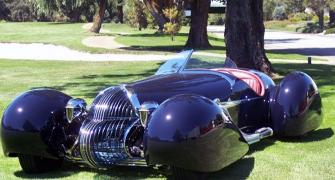Well, these engineering students race them too.
Text, photographs, video: Hitesh Harisinghani/Rediff.com
Ask any undergraduate engineering student and s/he would have heard of the BAJA SAE series.
Launched in 1976 at the University of California as Mini-BAJA, it challenges students to 'design, fabricate and validate' a single-seater, four wheel, off-road vehicle.
A gruelling race follows as the vehicle -- that kind of looks like a dune buggy -- is tested on its 'sound engineering practices and agility in terms of gradability, speed, acceleration, manoeuvrability and durability.'
BAJA SAE India, which was launched in 2007 by the Society Of Automotive Engineers, India, recently celebrated its 10th edition at Pithampur, Indore.
Besides the thrill of winning, the national-level competition gives students a real-life experience.
Each 25-member student team takes approximately 10 months to make the buggy -- this includes designing, manufacturing and testing -- and spends approximately Rs 2.5 lakh to Rs 3.5 lakhs.
Four hundred and fifteen teams from all over the country registered for the mega event, but only 185 teams made the cut, of which three were all-women teams. As many as 689 lady students participated in the event.
The 'endurance race', held at the NATRAX track in Pithampur, was the last event of BAJA SAEINDIA 2017; it saw 118 buggies compete for the winning title.
On a day that was perfect for an off-roading race rally, the atmosphere was charged with adrenalin.
As the buggies revved on the mud track and their drivers sweltered under the gruelling heat, the excitement level rose as students, with loud applause, cheered their cars on their way.
Take a look:
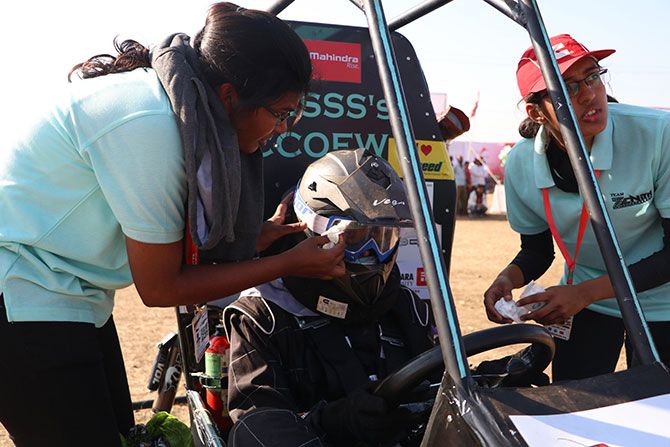
Aishwarya Jawle and Radheshree Ingle from Pune's MKSSS Cummins College of Engineering for Women help their driver get ready for the race.
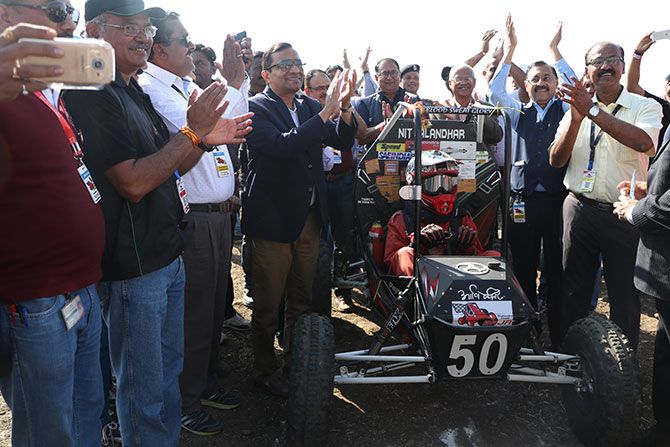
Dr Pawan Goenka, managing director, Mahindra & Mahindra Ltd, and chairman of the steering committee that launched the BAJA SAE India in 2007, flags off the race.

Vroom! Vroom! The cars are ready.
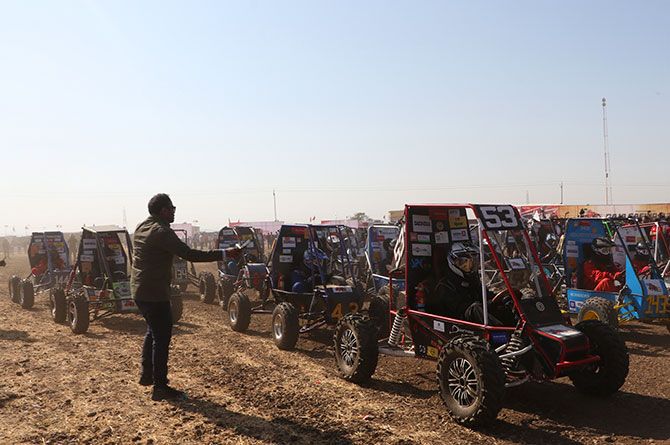
And off they go, leaving a storm of dust in their wake.
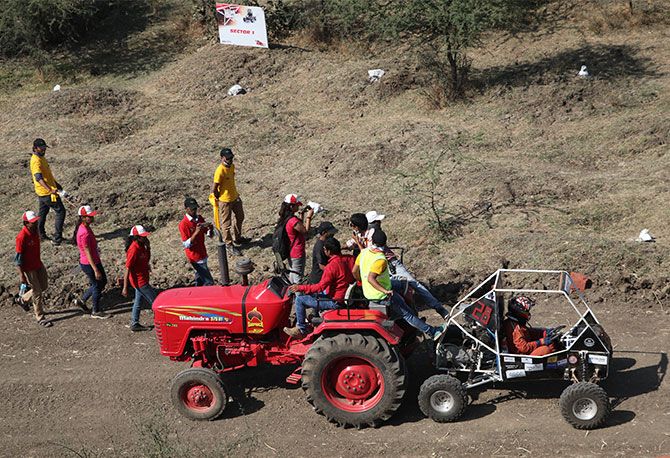
Some cars break down at the very beginning of the race and are towed away by tractors. Uff! What disappointment.
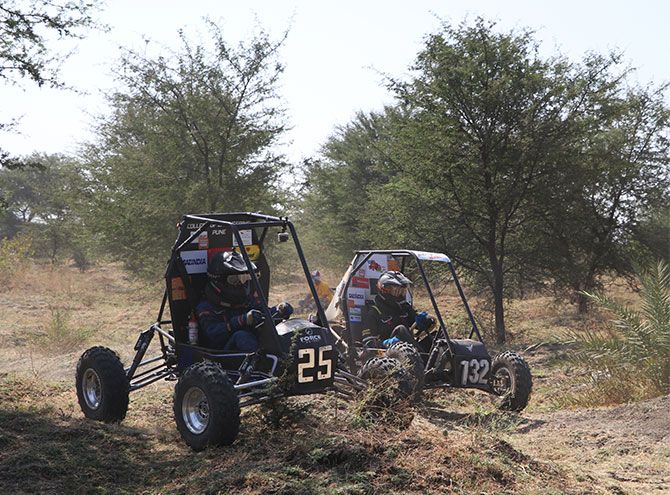
But the remaining cars more than make up as they overtake each other in the barren desert landscape.
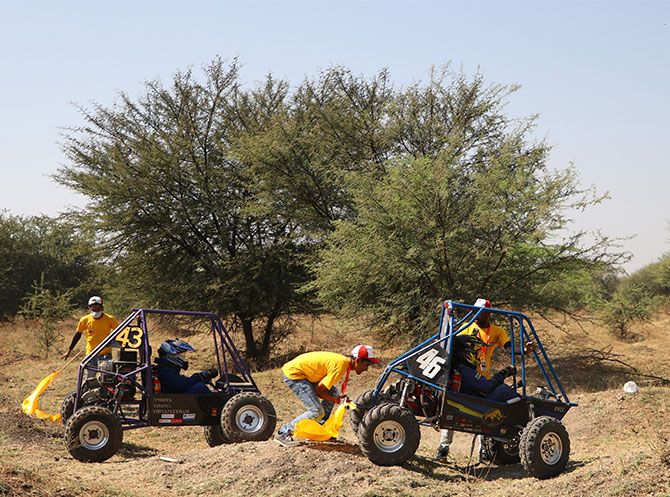
Volunteers play a very crucial role. They stand in the blazing heat for over 10 hours and do everything that is needed of them. Like lending a car that gets stuck a healthy push.
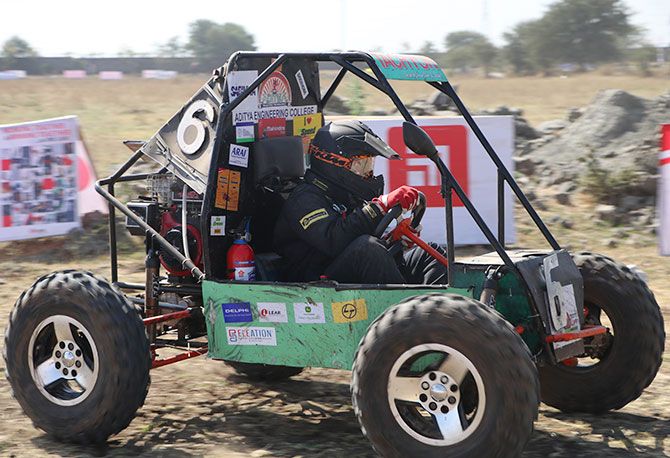
The cars touch speed of 30 to 40 km/hour.

The venue is as large as four cricket stadiums put together. These students and villagers decide to scramble up a hillock for the best view.
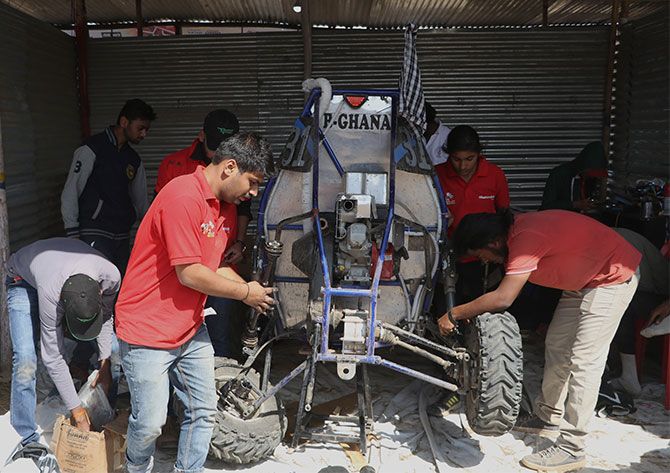
When the axle of their car breaks, the Shri Vaishnav Institute of Technology & Science, Indore, race to fix it.
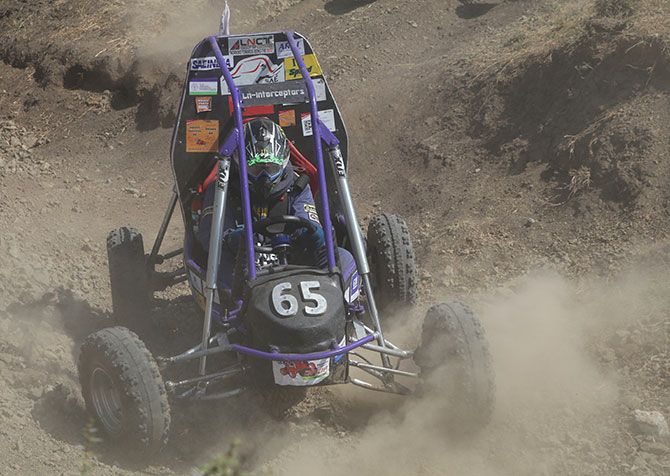
Since this is a pure off-roading experience, the clouds of dust come as no surprise when the BAJA vehicles tackle the dunes.

Children from the nearby village enjoy the drama.
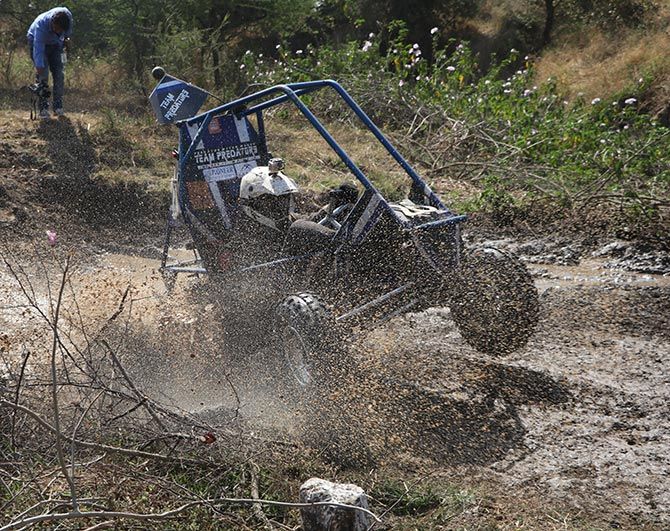
What's a race without some muck?

Students of the Amrita School of Engineering, Bengaluru, didn't have luck on their side; their acceleration cable broke in the very first lap.
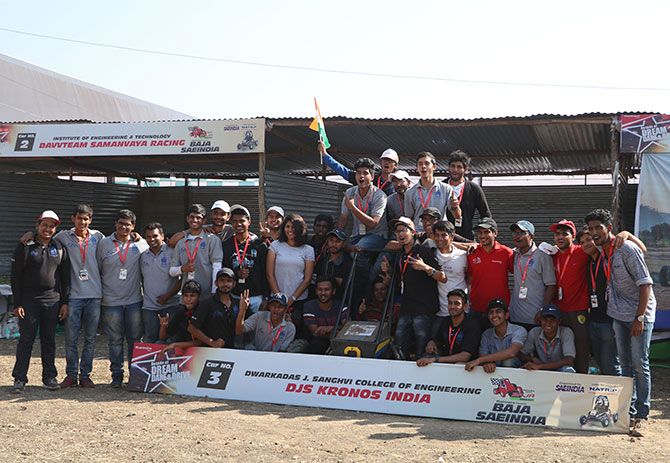
DJS Kronos, the official BAJA team from Mumbai's D J College of Engineering, were super-thrilled at having completed their laps.
The race was eventually won by the College Of Engineering, Pune, who took away the prize money of Rs 25,00,000. Incidentally, they won last year as well.
Mahindra & Mahindra are not just the main sponsors of the event; they provide all the intervention vehicles as well.
Sixty of the judges, and the technical inspectors for BAJA SAE, are from Mahindra. Ten Mahindra employees work full time on the BAJA SAE's organising committee.


